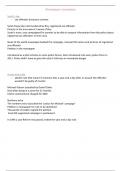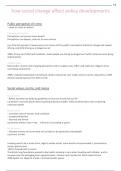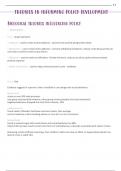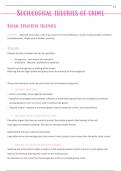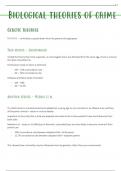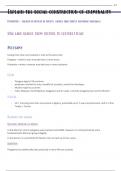WJEC • WJEC Level 3 Applied Diploma in CRIMINOLOGY
Latest uploads for WJEC Level 3 Applied Diploma in CRIMINOLOGY at WJEC. Looking for WJEC Level 3 Applied Diploma in CRIMINOLOGY notes at WJEC? We have lots of notes, study guides and revision notes available for WJEC Level 3 Applied Diploma in CRIMINOLOGY at WJEC.
-
9
- 0
-
1
Modules WJEC Level 3 Applied Diploma in CRIMINOLOGY at WJEC
Notes available for the following courses of WJEC Level 3 Applied Diploma in CRIMINOLOGY at WJEC
Latest notes & summaries WJEC • WJEC Level 3 Applied Diploma in CRIMINOLOGY
newspaper campaigns include summary of sarah's law and a year and a day individual campaigns includes summary of double jeopardy rule and clare's law pressure groups includes summary of protection against stalking act
how social change affect policy developments, includes public perception of crime, how social change affect policy developments, Demographic changes, Cultural changes
explanation of theories in informing policy development Biological theories influencing policy, includes biochemical, eugenics, death penalty individualistic theories influencing policies includes, psychoanalysis, operant learning theory, eysenck personality theory Sociological theories influencing policies includes labelling theory, strain theory, right realism, left realism
Evaluation of criminological theories, includes strengths and weaknesses of biological theories: Genetic theories - Twin studies - Adoption studies - XYY study Physiological theories - Lombroso's theory - Sheldon's theory - Brain abnormality - Biochemical Evaluation of criminological theories, includes strengths and weaknesses of individualistic theories: Learning theories - Sutherland' differential association theon - Operant learning theory - Social learning theory ...
explanation of Sociological theories of crime Social structure theories includes, marxism, functionalism, merton strain theory interactionist theories includes, labelling theory realist theories include, right realism, left realism
explanation of individualistic theories of crime learning theories include, Sutherland’s differential association theory, Operant learning theory – B.F skinner, Social learning theory - bandura psychodynamic theories include, Freud’s psychoanalysis, Bowlby’s maternal deprivation theory Psychological theories include, Eysenck’s personality theory
explanation of biological theories of crime genetic theories include, twin studies, adoption studies, XYY physiological theories include, born criminals, somatotypes, biochemical
explanation of the social construction of criminality explanation of How laws change from culture to culture/place includes polygamy, adultery, homosexuality, cannabis explanation of how laws change through time includes, homosexuality, gun control, Children, physical punishment explanation of how laws are applied differently according to circumstances includes, enforcement of the law, age of criminal responsibility, defences to homicide
description of criminal behaviour and deviant behaviour includes the legal definition, social definition, variety of criminal acts, court sanctions formal and informal, police sanctions against crime explanation of types of deviance, norms, morals and values, sanctions

